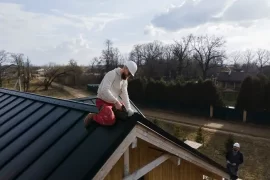Do you dream of glowing, healthy skin? You’re not alone. Many young women and beauty-conscious consumers are increasingly aware of the impact environmental pollution has on their skin. From premature aging to acne, pollution can wreak havoc on your complexion. In this blog post, we’ll explore the connections between pollution and skin health and share tips on how controlling erosion and sedimentation can help reduce pollution risks. By the end, you’ll understand why taking action against pollution is not just good for the planet but also for your skin.
The Hidden Dangers of Pollution to Your Skin
Pollution is more than just an environmental issue. It’s a significant factor in skin damage. Airborne particles, toxins, and chemicals can penetrate the skin’s barrier, leading to issues like premature aging, dullness, and even skin diseases.

Studies have shown that people living in highly polluted areas experience more skin complaints than those in cleaner environments.
How Erosion and Sedimentation Contribute to Pollution
Erosion and sedimentation are often overlooked contributors to pollution. When soil, sand, and other materials are displaced by wind or water, they can end up in waterways, carrying pollutants with them. This not only affects the environment but can also have indirect impacts on your skin by contaminating water sources used in skincare products.
The Connection Between Erosion Control and Better Skin
By controlling erosion and sedimentation, we can significantly reduce the amount of pollutants entering our environment. This has a direct impact on the quality of air and water, which in turn benefits your skin. Cleaner water means fewer contaminants in your skincare products, while cleaner air reduces the amount of harmful particles that come into contact with your skin.
Practical Steps to Reduce Pollution for Better Skin
Adopting Green Skincare Products
Choosing eco-friendly skincare products can make a big difference. These products are often formulated with natural ingredients that are less likely to introduce pollutants into your skin and the environment. Look for brands that prioritize sustainability and ethical sourcing.
Supporting SWPP Initiatives
One effective way to combat pollution is to support initiatives like the SWPP in Ogden. This organization works to control erosion and sedimentation, thereby reducing pollution risks. By supporting such initiatives, you’re not only helping the environment but also promoting healthier skin.
Using Protective Skincare
Investing in protective skincare can help shield your skin from pollutants. Products like antioxidant serums and broad-spectrum sunscreens create a barrier that prevents harmful particles from penetrating your skin. Regular use can significantly reduce the impact of pollution on your skin.
Erosion Control Techniques for Healthier Skin
Planting Vegetation
Planting trees and shrubs can help stabilize soil and reduce erosion. This simple yet effective technique can prevent pollutants from entering waterways, leading to cleaner water and air. Plus, plants naturally filter air, making the environment healthier for your skin.
Installing Erosion Control Fabrics
Erosion control fabrics are another excellent solution. These fabrics cover the soil, preventing it from being washed away by water or blown away by wind. This reduces sedimentation in waterways, resulting in cleaner water for skincare products and personal use.
Building Retaining Walls
Retaining walls are structures designed to hold back soil and prevent erosion. They are particularly useful in hilly or sloped areas where erosion is more likely to occur. By preventing soil displacement, retaining walls help keep pollutants out of water sources.
The Role of Government and Community in Pollution Control
Government policies play a crucial role in controlling pollution. Regulations that limit industrial emissions, promote recycling, and encourage the use of renewable energy can significantly reduce pollution risks. Community involvement is equally important. Local clean-up efforts, educational programs, and community gardens can all contribute to a cleaner environment and healthier skin.
The Long-Term Benefits of Reducing Pollution
Reducing pollution has long-term benefits that go beyond immediate skin health. Cleaner environments lead to better overall health, reduced healthcare costs, and a more sustainable future. By taking steps to control erosion and sedimentation, we can create a healthier world for ourselves and future generations.
In summary, reducing pollution through erosion and sedimentation control is a vital step towards not only a healthier planet but also healthier skin.
By adopting green skincare products, supporting initiatives like the SWPP in Ogden, and implementing erosion control techniques, you can make a significant difference.
Cleaner air and water mean fewer pollutants coming into contact with your skin, resulting in a more radiant complexion. Take action today and enjoy the benefits of a cleaner, healthier world.







